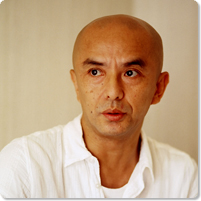A new base for creative activities, “KARAS APPARATUS”
- You opened the KARAS APPARATUS, housing a theater seating 60, a [rehearsal] studio, and a gallery in Ogikubo, Tokyo, as your new base of operations in July of 2013. The word apparatus comes from Latin and means equipment; can you tell us where you got the name? And, why did you decide to establish this new base?
- The name reflects my philosophy that even if there is no set or props on the stage, I want the theater itself to have a stage “apparatus” function (with apparatus meaning all of the necessary stage settings and equipment like the word sochi does in Japanese). As to my reason for setting up APPARATUS, it came from nothing other than a desire to dance more. Up to that point I had a studio in Kameido. The studio was used for rehearsals for productions that would be performed at other theaters but, naturally, these productions take a long time to prepare. Regardless of how many good pieces KARAS could create, regardless of the quality of the dance, regardless of how strongly we desire to present them to our audience, the opportunities are not always there for us to do this freely. Therefore, I wondered if it wouldn’t be reasonable to create a venue that would allow us to create dance as we saw fit and to present our work independently. While it is a small venue in terms of scale, the value of what we presented is exactly the same as if it were presented in a larger venue. As an example, the works of Eugène Ionesco and Samuel Beckett were performed in very small venues in the heart of Paris. These small venues are where very important 20th-century theatrical movements took place.
- I understand that at APPARATUS you have started the “Update Dance” series, which will “use [your] bodies, which metabolize every day, are replenished with new cells every day, and thus “updated” every day, to give performances of dance on the same daily basis.” Performances in the first year of this series included Well-Tempered, from Bach as the first to Mid-Summer Night’s Dog as the fourth; followed in the second year by MOZART as the fifth and on to No. 15; then up to No. 28 in the third year, including Fool and Waiting for Godot . So far in 2016, the first six months have included the silent production Shizuka; Spring and Ashura , which takes as its subject the poem composed in colloquial Japanese by writer Kenji Miyazawa; and Tristan and Isolde , and the number of productions in the series has now reached No. 36. Your productions show a lot of variety, including works with the same title being produced alternately as solo performances or with two performers, full of a variety of subjects, music, and literature.
- Although we have done some restaging of works, in general we give about eight performances per production. We have given about 70 performances this year. We give these performances because we want our audience to see more of our work, and giving as many performances as we do is also important experience for us. One can experience creation first hand in a venue such as APPARATUS: audiences sit close to the stage, and can share in the physicality of the dancers. Dancers in turn experience the energy or physical presence of the audience. When we first performed Shizuka , it was the audience that created the silence. APPARATUS is, in addition to being such a venue, a place for encounters, and a place where exchanges happen on many levels.
- This is reminiscent of the small-theater movement Japan has experienced in the past.
-
That may indeed be an influence. I gave my first ever performance of my work at the Kyu-Shinkukan Theater, which was a remodeled factory site and was a studio of the Kyu-Shinkukan Theater Company. Their rendition of “Waiting for Godot” is the best rendition of the play that I have ever seen, and to me at the time it was a sensation. As for the venue itself, I feel that it had a very specific audience, and it had closed-room feeling. On the contrary, I think it is important that APPARATUS should be more of an open space. Now having APPARATUS, I reflect on what we mean when we say “public,” or to a “public space.” As only our own productions are presented at APPARATUS, it is a private space. At the same time, I think it is also true that one must consider how such a private space may become more public. When we consider the word “public,” we may imagine a large venue, a big open space, many people, while less numbers of people, if they come together when we are open and occupy a common space, can just as well constitute a public venue.At APPARATUS, after every show, I get up on stage and talk. There may be people among the audience thinking, “well, that was nice, I’ll be on my way now…” but I just do it, I talk! I do this because I think that in order for a venue to be public (for a performance to be aimed at the general public), there is a process that must be undergone, which is to expose oneself to the eyes of the public and to reveal what lies within oneself, and to pose the question, is this working? Is this how things should be? I believe that in this day and age creating meaning or affecting change through production alone or through clever devices can only go so far. Sometimes people come up to me after shows and I enjoy it. I meet my audience on the stage, and then in the lobby, I get to listen to them.
- Can you elaborate on directing…what you mean by devices?”
- The theater as a device, in the sense of how performances are sold or presented. The other night, I watched a performance that Prince gave, in the 1980s. It was incredible. It did contain elements of production, of presentation, but in the end, Prince’s talent and his personality showed through, transcending any of these other elements.
- You have spoken about “making what is private, public.” Perhaps one way this is accomplished, is to reveal oneself to the audience, and to establish a common reality shared by the performer and the audience.
- I think so. If you are honest and dedicated, you will take on a show no matter what the size of the venue is: not in some act of paradoxical heroism, but as a commitment to giving all that you have to what must be done.
Inspiration coming from words
- So, you have been known for your edgy and highly conceptual dances. I found it refreshingly unexpected that you would adopt literature as inspiration for your work. The first of these was the unfinished novel, The Man Without Qualities , by the Austrian writer Robert Musil, which you adapted into the work Experimental theatrical piece “The Man Without” in 2008.
-
I did always like writers such as Ray Bradbury and Taruho Inagaki, and I have made shows from their works in the past. I treat all things as art objects (
objet
). I treat music and noise as tools, as things, as
objet
, and literature as well. Furthermore, I feel that I want to be used by these tools. I am the type of person that want’s to overthink things, to consider things as thoroughly as I can. I want to be able to perceive things from as many angles as possible, such as to come up with 100 answers for every question. I want to see things in as complex a light as I can. I want to be direct, and to the point, honest. For this a negative eye, can be useful too. There came a point in my life where a quest for things that “require thorough consideration,” i.e. difficulty, became very interesting. I mean this in a realistic sense, and not in the sense of a thing being incomprehensible. I do not like perceiving one-dimensionally. Like with sculpture, composing or looking at things from multiple dimensions increases the interest, and I think the room for error that it creates only adds to its value. In hindsight this change in me came about when I was working on The Man Without . Perhaps I wanted to challenge myself by using literature. I wanted the subject that I took on to challenge me, with difficult questions, difficult obstacles to overcome.
- Ulrich, the protagonist of A Man Without Qualities , is in an amorous relationship with Agathe, and the work contains a plethora of psychological and emotional representations and poetic allusions. In your dance, the text of the work unfolds in the background, whereas the dance does not follow the story, but rather coincides but then quickly diverges again, and interferes, runs alongside of, and is in opposition to the work. It appeared to me to be exploratory, probing the relationship between word and physicality, and ultimately redefining it.
- Musil’s writing is very well-defined and clear-cut. This enabled me to reflect on what the body is, and what words are. It made me reflect about communicating, reaching people. Communication is a very important thing, and it is a difficult thing. Does speaking volumes, does being very vocal, make up a good communicator? If so, are people who do not fall under these categories essentially bad communicators? Is a painting created as an act of communication, or is its primary importance rather in defining the existence of its subject.
- Bruno Schultz was the next literary subject that you took on. He was a Polish Jew who was a writer and painter, and he died at the hands of the Gestapo. You gave a series of performances at the Theater-χ (the Greek letter chi). You took on as your first motif the short story Spring from his short story collection “Sanatorium Under the Sign of the Hourglass,” adapting it under the title Spring, in one night (2013). Three other productions from this collection followed the same year, and another three in 2014. Then in 2015, you continued on with The man with blue eyes , and in 2016, with Cinnamon , taken from the collection, “The Street of Crocodiles.” Regarding your interest in Schultz, you have mentioned in another interview that, “His sense of crisis (impending doom) proves compelling.”
- I have used a lot of text by Schultz in my works. My thinking is that it is not my job to translate it into dance. Instead, have a desire to take it as a starting point from which to create something, to delve into it, to create from it some form that no one else has done. My goal is to be concise, to hone my expression to a point where no other words are necessary.
- Besides Schultz, there has been the Spanish poet Juan Ramón Jiménez, whose prose poetry you adapted you’re your piece Platero and I (2014); your piece Waiting for Godot (2015), based on the play by Samuel Beckett; Kenji Miyazawa’s prose poem Spring and the Demon (2016); and Dostoevsky’s The Idiot (2016); these have given you quite a wide range of motifs.
- Differences in the scale of these works, characters, and settings, are perhaps comparable in music to the difference between chamber music and the orchestra. Whether these works be long or short, I believe that dance concerns itself with what creative possibilities lie there, the kind of synthesis that can take place using the human body, what language and the body ultimately represent there. While a simple definition that “if there is music, one can dance, and that is the essence of dance” is perhaps valid, I believe that thinking about relating the human body to words does not fall under a specific established methodology, and cannot simply be plugged into existing movement language and patterns. Expressing the process of internalizing language in a physical way was, for me, an interesting and rich experience.
- Can you tell about your approach concerning novels and poetry?
- I have two approaches. Whether it’s Schultz, or Dostoevsky, one approach is to attempt to see through the eyes of the writer, to unravel how they lived their lives, and why they wrote. The other is to contemplate the message of the subject matter—picking and choosing what is important, identifying which sentences are crucial. When reflecting on the writing I try to pick up what is essential, even if it is only a part of the bigger picture, and do not try to see whether the sentence, a line, two lines, summarizes the whole story.
- This is unlike a literary approach, different from studying a writer’s background or deconstructing their writing analytically, isn’t it?
- When I performed The Idiot , many people seem to have “experienced something” strongly, despite there being no words. This was not to say that they understood and appreciated Dostoevsky’s original novel, but rather that by being exposed to the dance, they felt something in the movements of the body as they unfolded before them—that it was not a translation of the text but an experience linked to something that happened on stage, or associated with the movement that transpired there. In effect what was gained from the dance was not in essence the same as what could come from the novel. And perhaps this is what is interesting about making dances from literature.
- Can you describe this “interest” further?
- If we contemplate how people perceive things, we can come up with a whole list—as an instant or moment, as a part of the biological realm, socially, either objectively or subjectively, as an expression, or as true fact. What I find interesting may be simple but it is dealing with “emotions.” There is no fixed action that can be associated with an emotion, nor can it be said with certainty that saying the word “happy” represents an emotion. What is emotion. What is the emotion to be garnered from Myshkin in The Idiot , or what is the emotion expressed in Waiting for Godot? Saying, “I’m infuriated,” may only be a superficial expression of the emotion, which may be more complicated, more difficult to express. At some point I developed a passion for emotion, or perhaps how this ties into the human experience, into living.
At the same time, I became interested in the fact that we are all dying, in the sense that it is impending. Furthermore we fear death, and I am always afraid of something—always my mind searches for answers to questions that I do not know the answer to. Perhaps emotion lies where we cannot give reasons for why things are the way they are. Human emotions are actually very detailed, nuanced things. I know this because I dance, and when people dance the emotion differs depending on the body that is dancing, and that interests me.Talking about these things, I cannot help but think of Rihoko Sato. Sato is also one who dissects these questions finely.- Rihoko Sato, as a dancer, is an irreplaceable part of your works. She is internationally renowned for Scream and Whisper , performed in Rome for the first time in 2005, winning her “ballet 2000” magazine’s Best Dancer award, and receiving the 40th Leonid Massine prize in 2012.
- With Sato, I think is not so much her movement as her lack of any defining presence that sets her apart. And I think that she herself is comfortable with it, even after all this time. And I think it is that very lightness of presence, her thinness. Like a filament in a light bulb, when that thinness lights up, when it gathers heat—when a certain chemistry occurs—the result is explosive movement. Sato does not excessively display emotion. I think it is her way of voiding herself and being unattached, which gives her an ability to feel words and music with such depth of richness.
The human body, for me, is something which lacks value in and of itself, but which can create meaning based on its use. Musical notes too, can be brought together to express emotion and create pieces of music, but individually they themselves lack intrinsic value. Likewise there is no meaning in the sounds that make up words, nor is there meaning in letters like “a” and “b,” or tools. At the same time, the ultimate objective of using the body is not to convey meaning—because emotions, the “experience,” does not exist for the purpose of explaining some meaning.- Concerning emotion, or rather your artistic expression, when you stage a piece you do not only the choreography but are also involved in the set design, lighting, and music. What is this creative process like?
- I have about 10 different planners (from lighting, to music) living in my head, and it is always a pandemonium when I work. They always have different opinions and do not get along (laughter), and in fact their relationship is kind of strained. When one of them is very demonstrative about their idea, I say OK, let’s do that, and we start working. Lighting in stage production is particularly important. For it, I do not think and think and them make a plan, but rather, I just stare at the stage until I see something that needs to be done. There comes a moment when something strikes me, a sort of “Eureka” moment. Dancer Eri Wanikawa is in charge of the lighting operation at APPARATUS, so I tell her my ideas, and then proceed to look at them, sometimes with a decidedly critical eye, and assess whether they are good or not. If the lighting is good, presentations of the external appearance and the inner workings of the dancers become cohesive and do not require any explanation.
It is strange, but once the process starts and concentration kicks in, things only go forward. I never say, “Let’s think about it again tomorrow because I’m not certain about it.” Things get done pretty fast (laughter). It’s the advantage of having ten people inside your head; decisions all proceed together at once and I oversee it from start to finish, and then I go to talk to Sato and my remaining staff.- Where do your various ideas come from?
- From my parallel-dimension pocket, like in the anime Doraemon (laughter). In all seriousness, though, when I confront an empty stage, images just come to me, telling me how it has to be. And I am not trying to be mystical or refer to anything supernatural—all the various elements juggling inside of myself naturally fall together in a concrete and cohesive way. Before directing “Luminous,” my method was to piece together the various elements, and I used the metaphor of a “game.” The experience that I have now is that the various elements are more complex, and then come together, in swift resolution. As an example, for the choreography in “The Idiot,” Myshkin is first crouching in the left-hand corner of the stage facing diagonally upstage, and then in order for his face to be seen, he must turn it slowly to the left; things like this are decided naturally. I am not trying to make things fit together, rather, by having something out of synch is what brings the moments of insight into how things should be. Even for me, I think it is mysterious that these resolutions present themselves in this way.
I used to fancy myself as partaking in something like surrealist automatism. It was a kind of naturalism, that once started, the work should be left as such. Now, physically and intellectually, I try to be formless and empty. Not a hard emptiness, but an emptiness that is flexible and can take any form. That way, movements will emerge that fit any given set of conditions.- Did taking on literature as motifs affect your other works?
- I think that physical I have experienced what might be called a broadening, in which I feel that my senses have become honed to experience subtler nuances, more detail. I do not particularly discriminate between my works based on literature and those based solely on music. However, I do find that when I return to abstract dancing, I am making more interesting movements, that my physicality has grown richer. Words and the body speak with different language, and I think that my movements have taken on more flexibility, more breadth.
Inspirations from Music
- I associated Saburo Teshigawara with noise-based music, but I remember being surprised that in Absolute Zero (1998) and Luminous (2001), you were using music by Mozart. In recent years, you have begun to collaborate with musicians performing classical music, and you did a solo dance to a performance of Bach’s Unaccompanied Cello Suites with cellist Tatjana Vassiljeva in 2009.
- Even before that, I have given other performances overseas such as a collaboration with an orchestra playing music of the powerful Gerogian composer Giya Kancheli., but the 2009 piece you mentioned was my first such performance in Japan. I used to listen to classical music as a child and have always liked it. As far as music goes, I also like jazz and rock music. My first record that I bought in elementary school was Paint it Black and 19th Nervous Breakdown by the Rolling Stones (laughter). In 2014, I gave performances titled Dancing Songs , in which I danced to everything from children’s songs like “ Zuizuizukkorobashi ” and Japanese traditional Dodoitsu to Kyu Sakamoto’s Ue o Muite Arukou (Sukiyaki song) . I also like Miki Hirayama (a Japanese pop singer in the 70s) (laughs). I like all music. I like Mozart, I like Bach, I like Beethoven, I like jazz, pop music, rock music, noise music, Islamic music, the tango, the mambo, Hawaiian music, dodoitsu .
- I remember saying in our previous interview that when choosing music your choices were based on a piece’s feel, as opposed to genre.
- Yes. I feel a material quality in music, and there is material quality in movement as well, and I think that was what I was talking about. It is not as a methodology or as a style that I want to base my choices on; I choose music very carefully based on its material quality. One cannot dance without feeling the music, right? Whether it is African polyrhythm, Hawaiian, a tango, a mambo, kayōkyoku (mid-20th century Japanese pop) or enka (Japanese pop associated with traditional Japanese music), and ultimately even without music. It allows one to be removed from the music, to not be dominated by it.
- Shizuka was a soundless duo piece performed by yourself and Rihoko Sato. Watching it, not only did I experience my audiovisual senses merging as one, but changes in proprioception, like my physical experience of my own body to its deepest parts was mimicking yours, and also like my senses were being differentiated and then being jumbled back together.
-
Yes. I am interested in derivatives. Differentiation is a mathematical term, but I think it is also a faculty that is inherent in us as human beings. If you consider numbers, they exist as something that can give us measurements, but it is not as if they exist as inherent entities. Furthermore, differentiation can be associated with our sense of speed of movement. While the speed in physical movements cannot actually be described in terms of miles per hour, it does exist, and for us as dancers it is an important thing. To describe it in another way, I think it can be said that it is almost a material quality, like volume. To return to what you just said, music, like special effects, can get in the way of certain senses that are actually heightened by silence. The foot as it is lifted off of the ground, for example, actually traverses a great distance from when it is first put down on the floor to when it leaves it. It is difficult to express in words, but the weight that is involved, the velocity, the movement that it traces, together adds up to what feels like about 10 meters of linear movement. Shizuka is a performance that brings out what the sole of the foot was actually doing, that there was actually a great expanse of space that the sole of the foot was experiencing. Similar to being on a train with your body swaying with the train’s movement, the sole of the foot is affecting the entire body. This cannot be brought out when music or some other element is ticking away the passage of time.
- Both you and Rihoko Sato are very quiet on your feet, no matter how big or violent your movements are on stage.
- Yes. This has to do with the way that the foot is “displaced,” different from walking, and more like a caterpillar (continuous tracks, tank treads). I have had no formal instruction in the suriashi or silent walk that is seen in Noh, but I concentrate on how I use the soles of my feet to move my center of gravity. Kind of like [Michael Jackson’s] “moonwalk,” I am shifting my center of balance. The first thing that I say at my open workshops is this: somewhere along the way we have been taught to walk with a certain rhythm, “one, two, one two,” where in actuality, if we use our right foot, and then our left, overlapping, to shift our center of gravity leading heels first, we can all walk more beautifully. The heel is the key. The heel is actually round. So, like a ball rolling, if you can land on the heel along its arc, you can achieve more agility in your movement. This and having looseness in your knees, and being able to kick off naturally with the ankles; these are the elements that comprise a beautiful walk.
- How does using the soles of the feet in this way affect upper-body movement?
- The upper body “flows” from the life force that travels up from the sole of the foot. The sense is like that of life force, and can in fact be experienced like a sense of being alive. For example, smoke moves in response to movements in the air. In a similar way, the body can be felt to be responding, like it is being directed, automatically. Our movements are created by a complex combination of sources. I think this is important, and I take a long time in striving to teach it in my workshops, using no music and only the rhythm of our breathing.
- In the past, I had the pleasure of sitting in on workshops you gave to university students and to elementary students. You began the sessions by having the participants jump and shake their wrists for what felt like a very long time, apparently to have them rid themselves of any particular habits of movement that they may have, and after that you had them begin to move.
- Yes, I begin all my workshops that way, whether at the Paris Opera Ballet or NDT (Nederlands Dans Theater). In the 90’s, I conducted a workshop using this method at the Ballet Frankfurt for a total of about three months. I think it had an impact on the Ballet Frankfurt—starting with the workshop, then moving on to choreography, and creating a piece.
I’ve actually just come today from a workshop with ballet dancers in the upcoming opera production of Mozart’s The Magic Flute . Because of their ingrained classical ballet techniques (the ‘en Croix’), it is actually difficult for them to simply mimic my movements. My own technique lies inside of me with my own physical “axis,” and I just produce these movements naturally; what I mean by naturally is with simple movement, like “shaking” the body. If you start from something simple like that, then it becomes accessible to everyone. So, in my workshops, I just focus on getting people to relax their bodies. If participants are able to relax their bodies and are able to catch on to the idea of shaking the body, they can then continue on to move naturally, and this is what I have continued to do.- Don’t you find it challenging to get ballet dancers to relax?
- Relaxing is like the state of the body when one is in a bath, or drunk. It’s actually not very difficult to recreate but ballet dancers are afraid to simply be themselves—it requires removing one’s metaphorical protective armor. Stated differently, this means that they can only move (dance) if I is in a formation they know. So, what remains when these forms are then taken away? Is that not, yourself? And what does that mean? This is a good starting point to get people dancing properly. This is true regardless of whether it is for classic ballet or contemporary dance. In contemporary dance, which is considered to be formless, and if it does acquire forms (conventional movement patterns), it would lose its interest. What point should you start from [in dance, in a workshop]? Starting from this kind of relaxation, or you could say becoming empty, and what can you say [to people in a dance workshop; this is my answer.
I think it is important to be able to distance oneself from one’s techniques for a moment. After this occurs, does the person then suddenly find him- or herself at a loss for anything to say; or, conversely, do they start to talk too much? I think it is important for artists to have times and places like this, where they can look at themselves forgivingly and say, “this is OK too,” for them to let it be and move clumsily.
An artistic challenge with Opera
- You are choreographing and directing an increasing number of operas in recent years. This is a challenge that entails getting movement not only from the dancers but from the singers too.
- I first became involved with Opera when I directed Turandot in Japan, in 1999, and in Europe I directed Dido and Aeneas by Henry Purcell at the Teatro la Fenice in Italy in 2010, and Handel’s Acis and Galateia at Aix-en-Provence in the following year. I always do the direction, choreography, lighting, set design and costumes, and in the case of Solaris , based on the novel by Polish writer Stanisław Lem and composed by Dai Fujikura that we premiered at the Theater of Champs Elysées in Paris, I actually wrote the script as well. In this instance I kept the movement of the singer to a bare minimum, because I don’t like to see singers acting. I feel that their expression should be done through their singing because, quite frankly, that is enough. I did have as main dancers Nicolas le Riche, formerly from the Paris Opera Ballet, former NDT dancer Vaclav Kunes and Rihoko Sato. While small in scale, I think it was an interesting effort to bring the singer and the dancer together into one character, like the gidayū (chanter) and the puppet in Bunraku traditional puppet theater.
- I understand that you will premiere Mozart’s “The Magic Flute” at the 2016 Aichi Triennale in September, with additional performances in Yokohama. I understand that ballet dancers will be performing. Please describe this production for us.
- I will be taking on the direction, choreography, set design, costumes, make-up, etc. It actually might be easier if I could do the conducting as well (laughter). Just kidding! Rihoko Sato will be performing, and also in charge of the narration. “The Magic Flute” is an opera that has many scenes of straight acting, which presents a problem. It would be awkward if the songs were sung in German, and then it switched to Japanese for the acting scenes. What I have done is to take out the acting scenes, and replace them with Japanese narrations. The dance will be performed by 16 dancers from the Tokyo Ballet, and singers will focus on the singing, not acting. I have decided to implement a moving set, and hope to create an organic feeling of movement in the stage space throughout.
- Do the dancers then function something like the Chorus [in ancient Greek tragedy]?
- I would rather call their role as something like the atmosphere, texture, or perhaps the music or mentality of the singer/character. Basically, what I am getting at is something that is there, but cannot be perceived visually. I plan to have large metallic rings on stage that will rotate, or float, and perhaps I will have three dancers dance to the part of one singer. I hope it will be very free and creative. That will bring it closer to Mozart’s music. If on the other hand, we here in Japan were to try to recreate Egyptian battlements and build a wall of wood, and then paint it over, it would not be anything worth seeing. The attraction of art, to me, is how far you can take abstraction. This is what interests me the most about art.
- That sounds like it will be one of the most abstract versions of The Magic Flute ever.
- I think that abstraction should be accompanied by a figurative element; it should have a feeling of reality to it. If this is not done, you no longer have abstraction, instead it becomes just illusion, or escapism. So what is the reality in it? I think it is movement. Moving abstraction. Put quite simply, it is life. I do not want to relegate life to some kind of symbol or representation. I want to perceive it, instead as the flow of reality, the movement of something concrete, like the pulse of arteries. No matter how old we get age, the human body, their life-form, remains new. Even in an elderly person the cells of the skin are being constantly renewed. That is what I think it means to be alive, I believe.
- Thank you for being so generous with your time today. We will look forward to your opera!
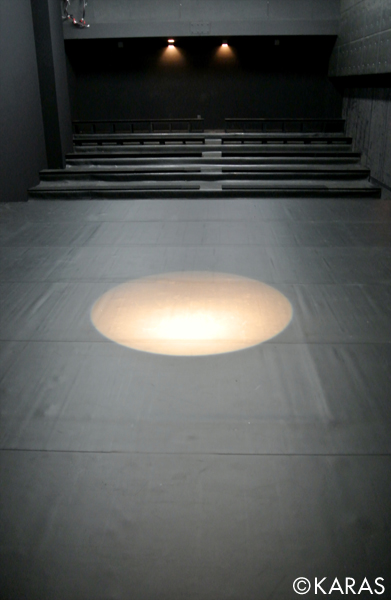
KARAS APPARATUS
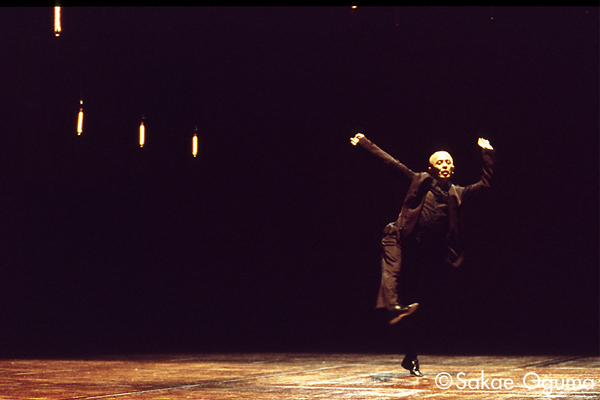
The Man Without
(2008)
Photo: Sakae Oguma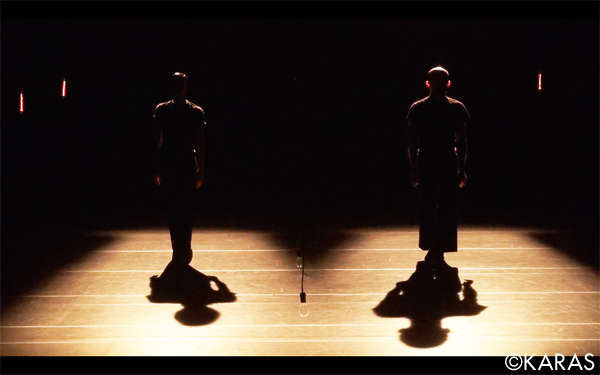
Well-Tempered, from Bach
(2013)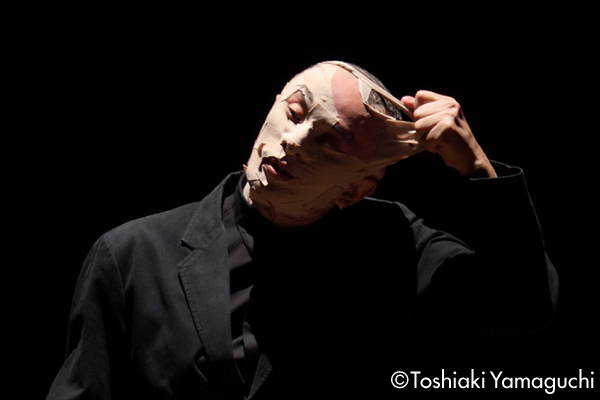
Spring, in one night
(2013)
Photo: Toshiaki Yamaguchi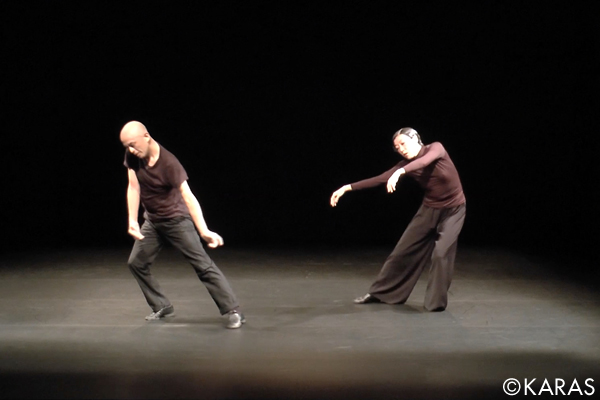
MOZART
(2014)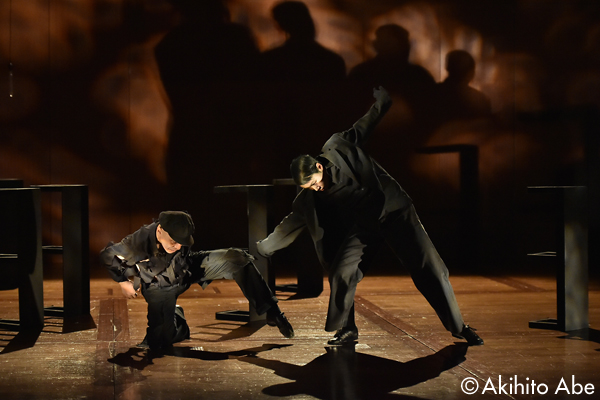
Empty Hourglass Sanatorium
(2014)
Photo: Akihito Abe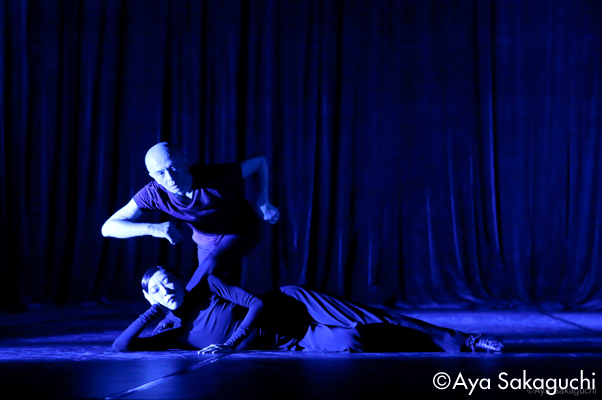
The man with blue eyes
(2015)
Photo: Aya Sakaguchi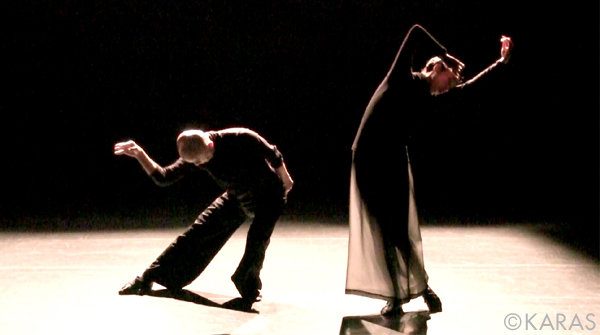
Shizuka; dance in silence
(2016)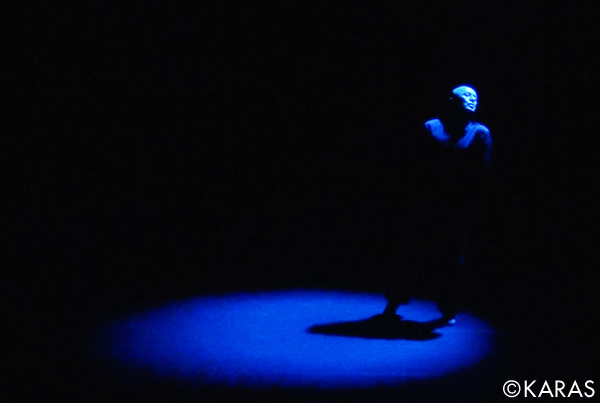
Spring and the Demon
(2016)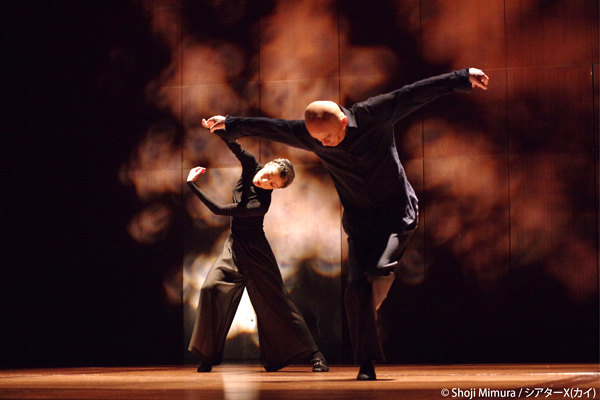
Cinnamon
(2016)
Photo: Shoji Mimura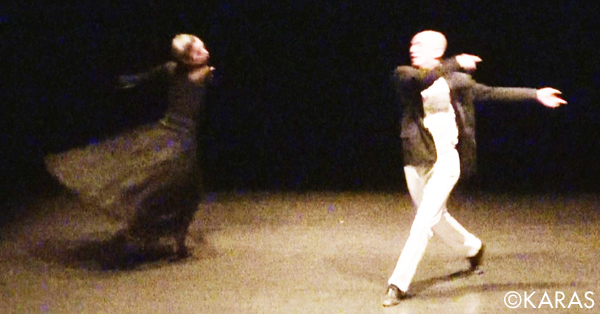
The Idiot
(2016)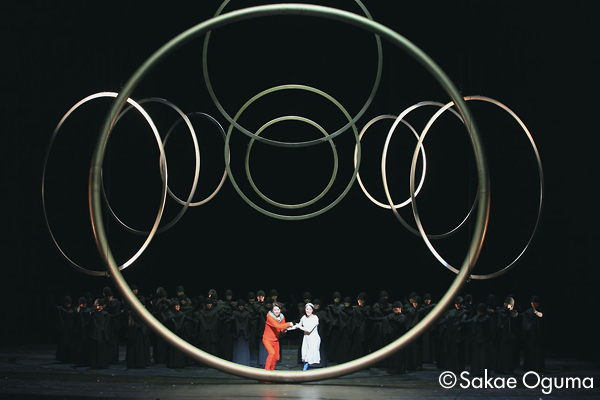
Aichi Triennale 2016 Opera production
The Magic Flute
(Sep. 17, 19 at The Theater in Aichi Prefectural Arts Theater)
Photo: Sakae Oguma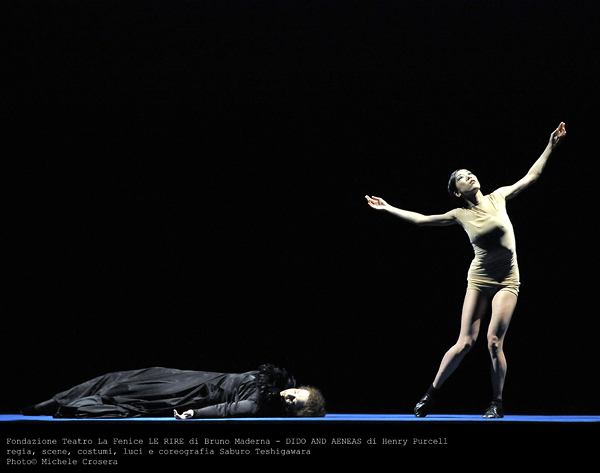
Teatro la Fenice production
Dido and Aeneas
(2010)
Direction, choreography, set/light/costume design: Saburo Teshigawara
Photo: Michele Crosera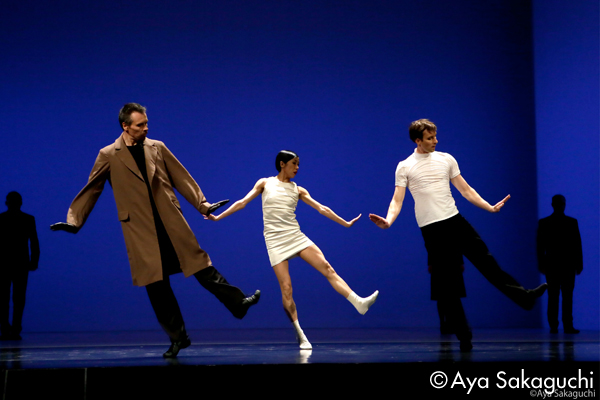
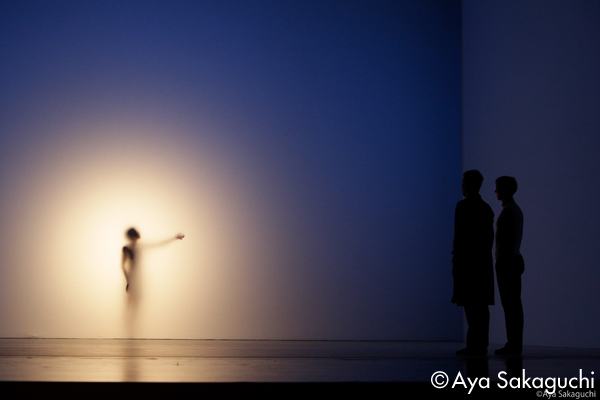
Théâtre des Champs Elysées production
Solaris
(2014)
Script, set/light/costume design, choreography and direction: Saburo Teshigawara
Photo: Aya Sakaguchi
Related Tags


